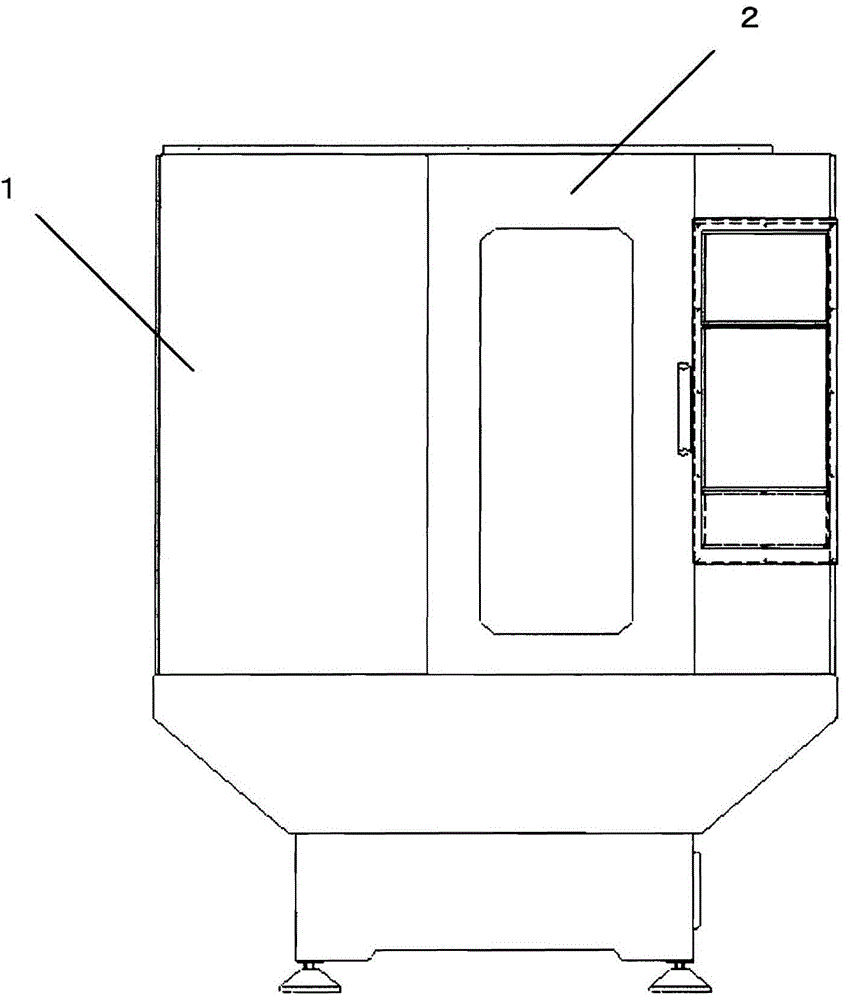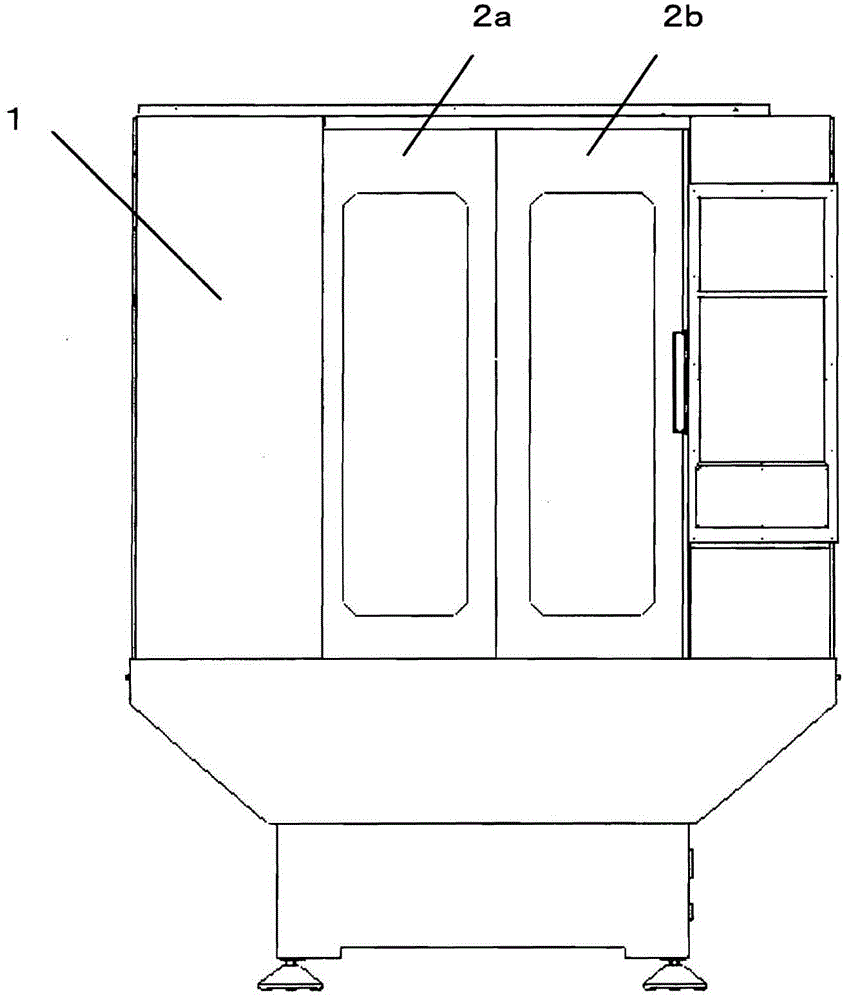Machine tool having protective cover
A technology for protective covers, machine tools, applied in the direction of manufacturing tools, maintenance and safety accessories, metal processing machine parts, etc., can solve the method of grounding a moving door without mentioning, without describing the method of grounding a moving door, no Describe issues such as the method of electrical connection between the door and the fixed cover
- Summary
- Abstract
- Description
- Claims
- Application Information
AI Technical Summary
Problems solved by technology
Method used
Image
Examples
Embodiment approach 1
[0038] FIG. 8 is a diagram for explaining Embodiment 1. FIG.
[0039] In Embodiment 1, the leaf spring 3 is used as the conductive member. Such as Figure 8AAs shown in FIG. 1 , the leaf spring 3 as a conductive member is fixed to the splash guard main body 1 using fixing bolts 4 . Next, the leaf spring 3 comes into contact with the side surface of the door 2 when the door 2 is assembled in a predetermined position. The leaf spring 3 is a spring that expands outward. The portion of the door 2 that the leaf spring 3 contacts is made of a metal surface that is not painted. Through the above operations, the door 2 is in a state of being grounded to the splash guard main body 1 . in such as Figure 8B Even when the leaf spring 3 is fixed to the door 2 using the fixing bolts 4 as shown, the part of the splash guard main body 1 that contacts the leaf spring 3 is a metal surface that is not painted. In addition, the contact part of the leaf spring 3 may be a machined surface or...
Embodiment approach 2
[0043] FIG. 9 is a diagram for explaining Embodiment 2. FIG.
[0044] Regarding the method described above, Embodiment 2 is a mode in which the coil spring 5 is used instead of the leaf spring 3 of Embodiment 1 as the conductive member. Figure 9A An embodiment in which the coil spring 5 is fixed on the splash guard main body 1 is shown. Figure 9B An embodiment in which the coil spring 5 is fixed to the door 2 is shown.
[0045] In addition, the coil spring supporting member 7 is as Figure 9A As shown, the parts supporting the coil spring 5 in the direction of pressing the side surface of the splash guard main body 1, or as Figure 9B As shown, the member supports the coil spring 5 in the direction of pressing the side surface of the door 2 . By using the coil spring supporting member 7, it is possible to prevent the coil spring 5 from bending, and to stably contact the coil spring 5 with the facing member. In addition, the coil spring 5 is provided to be replaceable, an...
Embodiment approach 3
[0047] FIG. 10 is a diagram for explaining Embodiment 3. FIG. Embodiment 3 is an aspect in which the combination of the coil spring 5 and the slider 6 is used instead of the plate spring 3 of Embodiment 1. As shown in FIG. Figure 10A The embodiment in which the coil spring 5 and the slider 6 are fixed on the main body 1 of the splash guard is illustrated. Figure 10B An embodiment in which the coil spring 5 and the slider 6 are fixed on the door 2 is illustrated.
[0048] In addition, the coil spring support member 7 is as Figure 9A As shown, the parts supporting the coil spring 5 in the direction of pressing the side surface of the splash guard main body 1, or as Figure 9B As shown, the member supports the coil spring 5 in the direction of pressing the side surface of the door 2 . By using the coil spring supporting member 7, the coil spring 5 can be prevented from bending, and the coil spring 5 or the slider 6 can be brought into stable contact with the facing member. ...
PUM
 Login to View More
Login to View More Abstract
Description
Claims
Application Information
 Login to View More
Login to View More - R&D
- Intellectual Property
- Life Sciences
- Materials
- Tech Scout
- Unparalleled Data Quality
- Higher Quality Content
- 60% Fewer Hallucinations
Browse by: Latest US Patents, China's latest patents, Technical Efficacy Thesaurus, Application Domain, Technology Topic, Popular Technical Reports.
© 2025 PatSnap. All rights reserved.Legal|Privacy policy|Modern Slavery Act Transparency Statement|Sitemap|About US| Contact US: help@patsnap.com



